
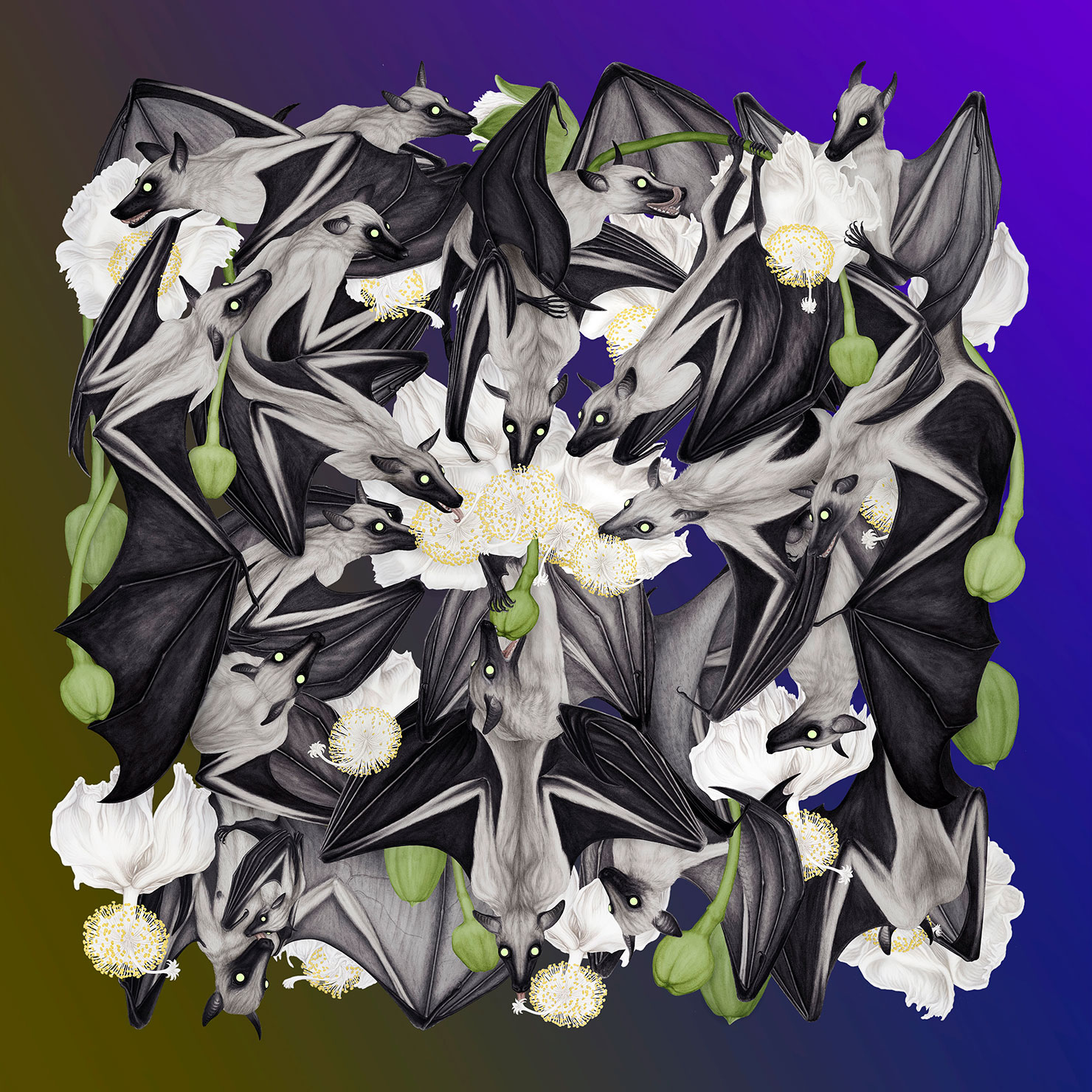
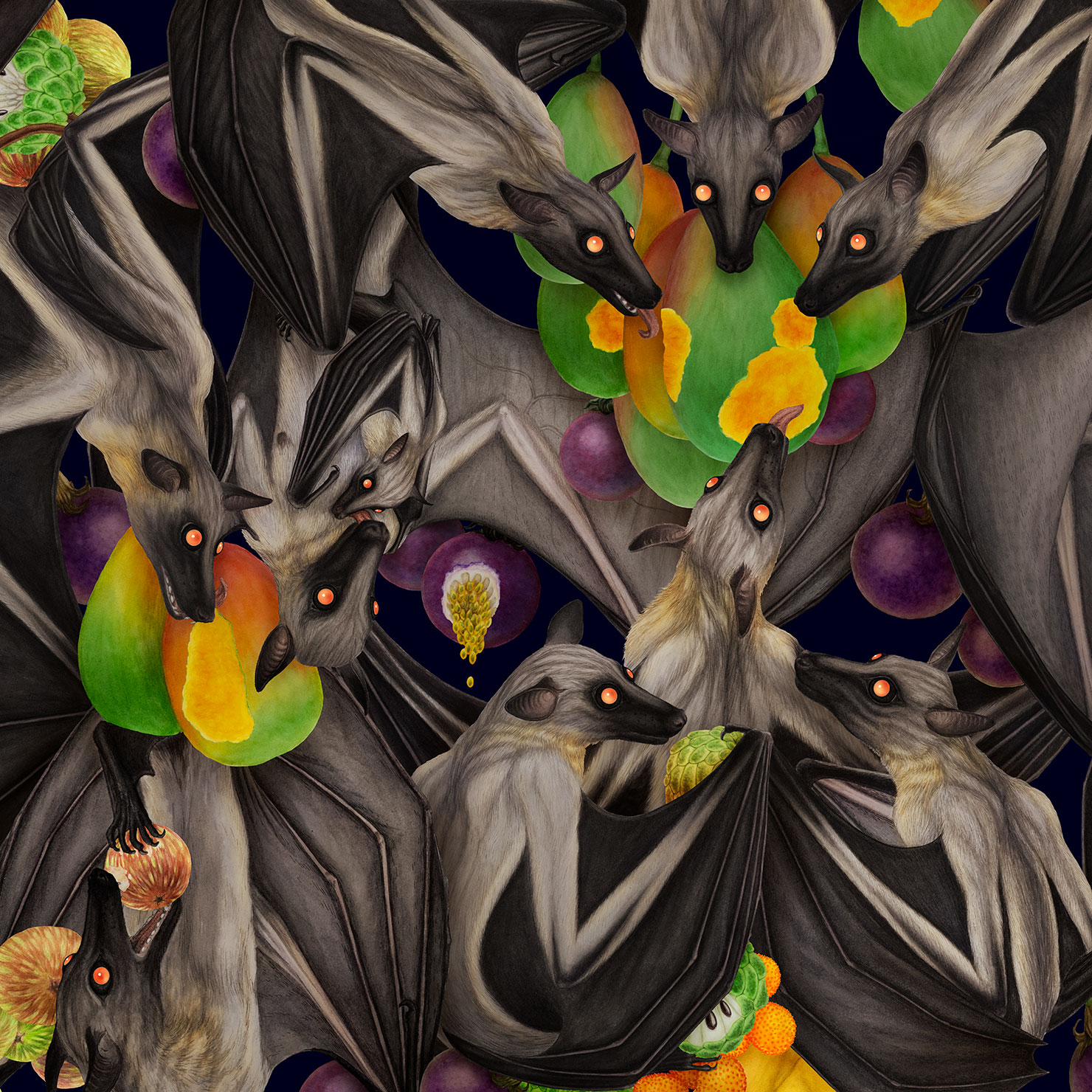


BATS
Ink paintings of African Straw Coloured fruit bats, assembled
BATS I shows the bats in a baobab tree at night. They are the main pollinators of this iconic African tree, which opens its upside-down flowers at night for the bats to pollinate.
BATS II is a merry get-together with succulent fruit, with the bats feasting on mango, papaya, African figs, cherimoya, passion fruit and lychees. There is a slightly spooky ‘midnight’ version and a pastel-dreamy ‘dusk’ version.
Work in progress images after the text
Ooh Bats, the beloved totem animal of philosophers and outsiders! This strange animal which looks like a cross between a rodent and a bird (a Chinese name for the bat is ‘heavenly rat’), rests upside down, sleeps in caves and feeds in the dark, and carries babies on the chest like we do… of course our imagination has burdened these enigmatic creatures with all sorts of astonishing qualities and powers.
Earlier biologists like Linnaeus (18th century) actually put bats very close to humans in their species classification – because of details like the slightly ‘humanoid’ faces in insect-eating bats, and their single pair of nipples at chest height, which is otherwise a feature of primates. Oh, and bats also menstruate, which is also a primate thing, with only one other known exception in the animal kingdom (the elephant shrew).
The bat’s perceived ‘in-betweenness’ has often caused unease, manifesting a fear of the ‘hybrid’, and the association with a higher power or otherworldliness, in the West most commonly with melancholia, madness, night, death, darkness or worse – downright evil and demonic.
The English language has expressions attesting to this: batty, batshit crazy, taking off like a bat out of hell… and many ‘Batsploitation’ movies made use of our fear of bats.
However in the far east, especially China and Japan, bats are a sign and symbol of good fortune. In China, the Bat is also a substitute symbol for happiness (‘Bat’ and ‘Happiness’ are homonyms), and bats are often depicted alongside peaches ‘for a long and happy life’.
It has been pointed out that bats tend to be beloved in cultures where ancestral spirits are venerated, while in others, where the dead are believed to pass on and don’t return, bats are often perceived as demonic.
Scientifically, bats are the only truly flying mammal, and there are an astonishing 1331 known species of bats, and counting! They range from the tiniest ‘bumblebee bat’ weighing about as much as a bumblebee, to some large fruit bats with a wingspan the size of an adult human.
They can broadly be divided into the mainly small, insect-eating and echolocating bats (the majority of species) which live on all continents except Antarctica, and the fruit eating bats which usually live in tropical climes. Then there are the infamous ‘vampire bats’, the blood sucking kind, but they only comprise of three species of rather tiny bats in South America and they usually feed on farm animals.
The ones I chose for the artwork are African Straw Coloured fruitbats (Eidolon Helvum). These medium-sized bats are highly social creatures and travel in massive colonies of at least 100,000 individuals, sometimes massing up to 1 million. They also form the largest migration of mammals on the planet, up to 10 million straw-coloured fruit bats congregate every October to December in Kasanka National Park in Zambia!
Bats have very important functions in ecosystems, fruit bats are pollinators as well as seed dispersers, and many tree species depend on bats for their existence. The insect eating bats keep insect populations in check, including disease-transmitting mosquitos as well as agricultural ‘pests’.
Unfortunately, most bat species are declining due to habitat loss, and sometimes also because of killings due to human superstition or hunting for food. Bats reproduce very slowly as they usually only have one baby at a time once a year, and it takes a long time for a decimated population to recover.
Bats have also received a very bad reputation as disease transmitters. They do carry a large variety of viruses, and as fellow mammals this theoretically poses a danger to humans, but actual evidence of transmission is very thin on the ground, except for some rabies cases in the USA. Millions of people in Asia and Africa regularly hunt and eat bats, and there are lots of ‘bat rescuers’ all over the world who nurse injured bats or orphaned babies. Covid was first blamed on bats too, but the mutation of the bat virus which would be necessary for it to transmit between humans remains unexplained (involving either a third species or a lab accident).
In our times bats have become more beloved and admired, not only for their large contributions to ecosystems and reforestation, they seem fill an important role symbolically too.
Their attributes of getting along with each other peacefully, plus their air of otherness, which can be interpreted as feeling alienated or misunderstood, resonate with contemporary life. Not to forget their ability to navigate in the dark…
For me bats also symbolise our shadow parts (unconscious) and embracing these seemingly mysterious parts of ourselves as beautiful and useful.
A composition of bats peacefully feasting on fruit or flowers can symbolise our collective unconscious in a harmonious and abundant state.
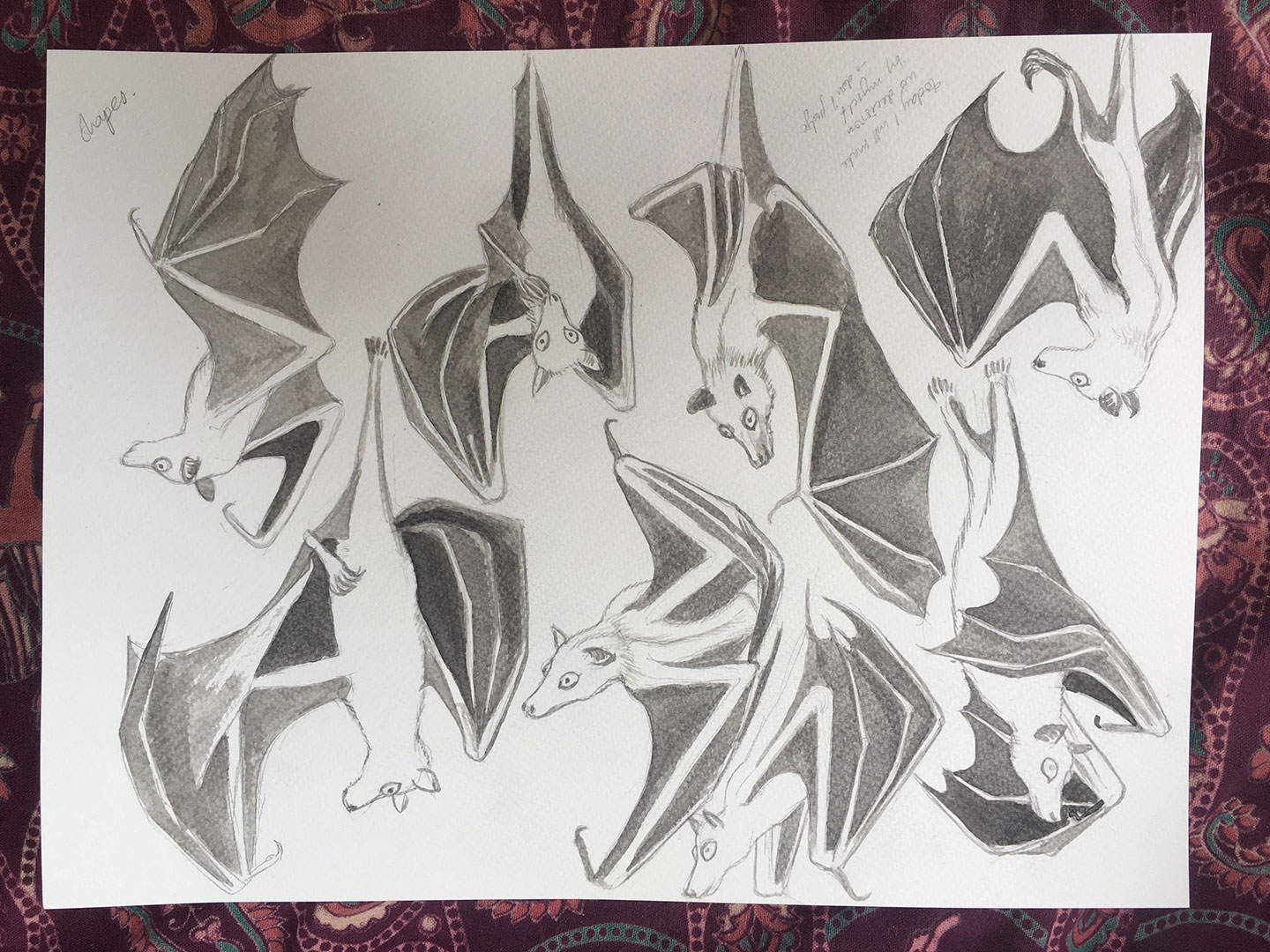



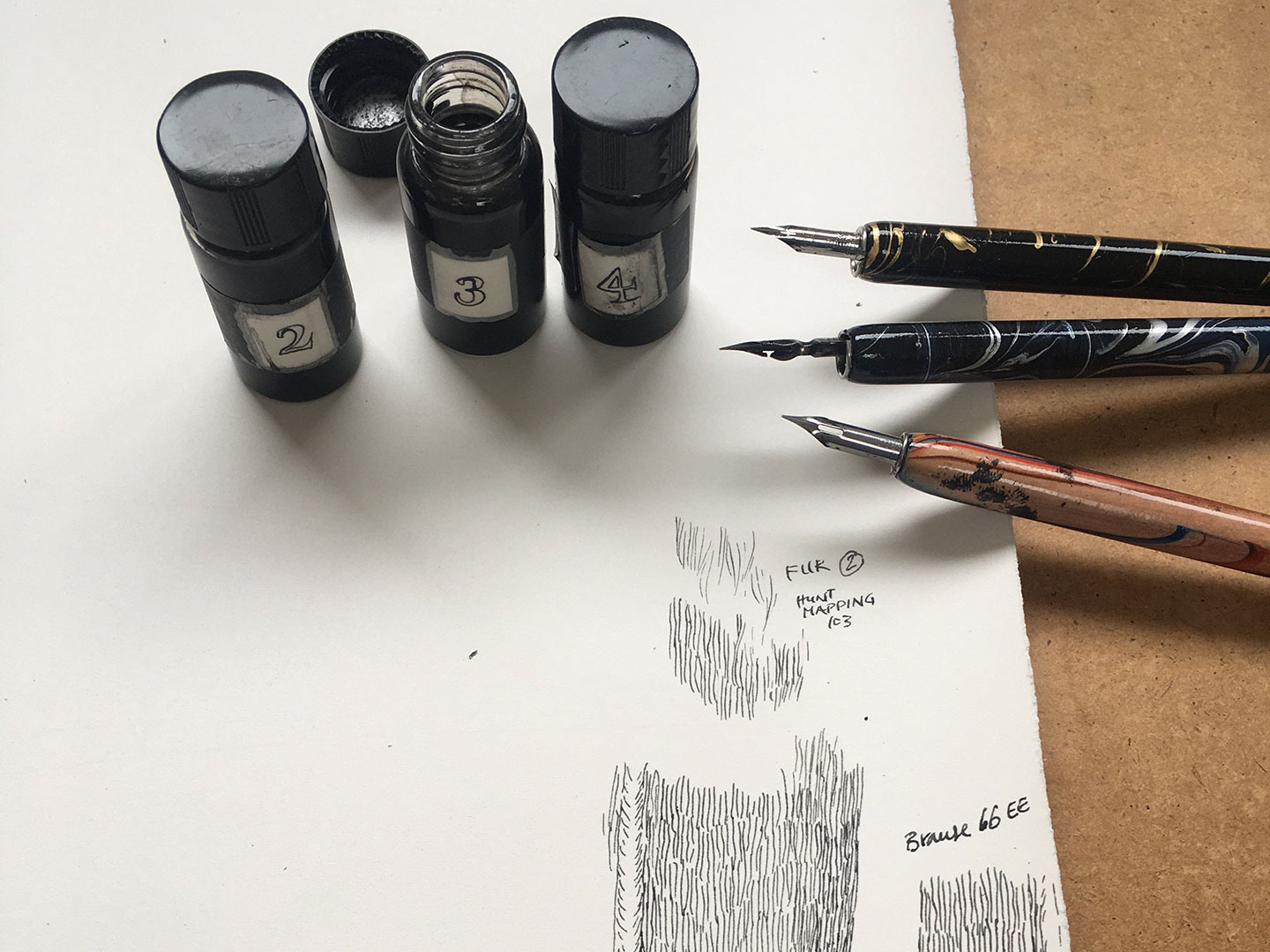

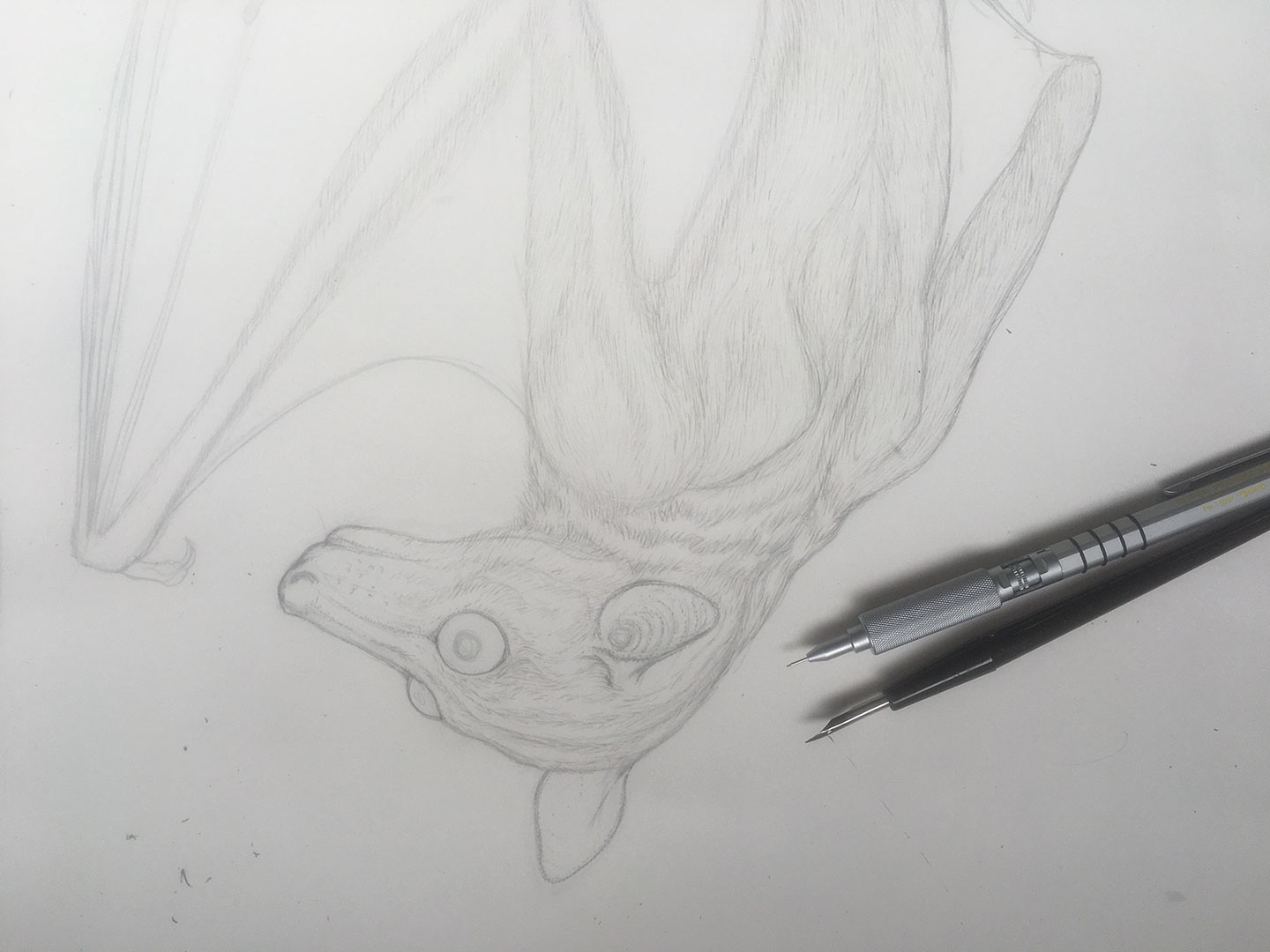


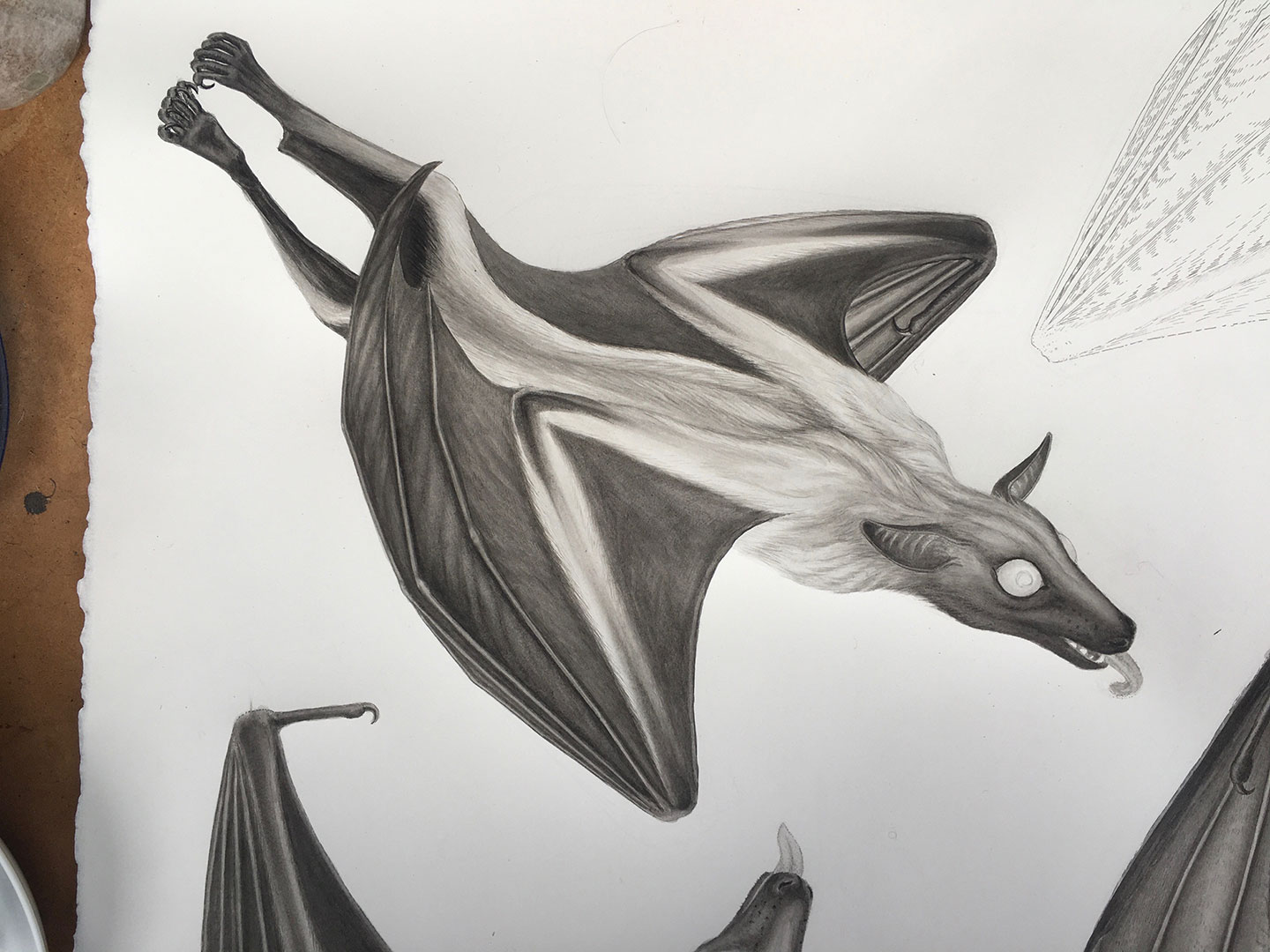
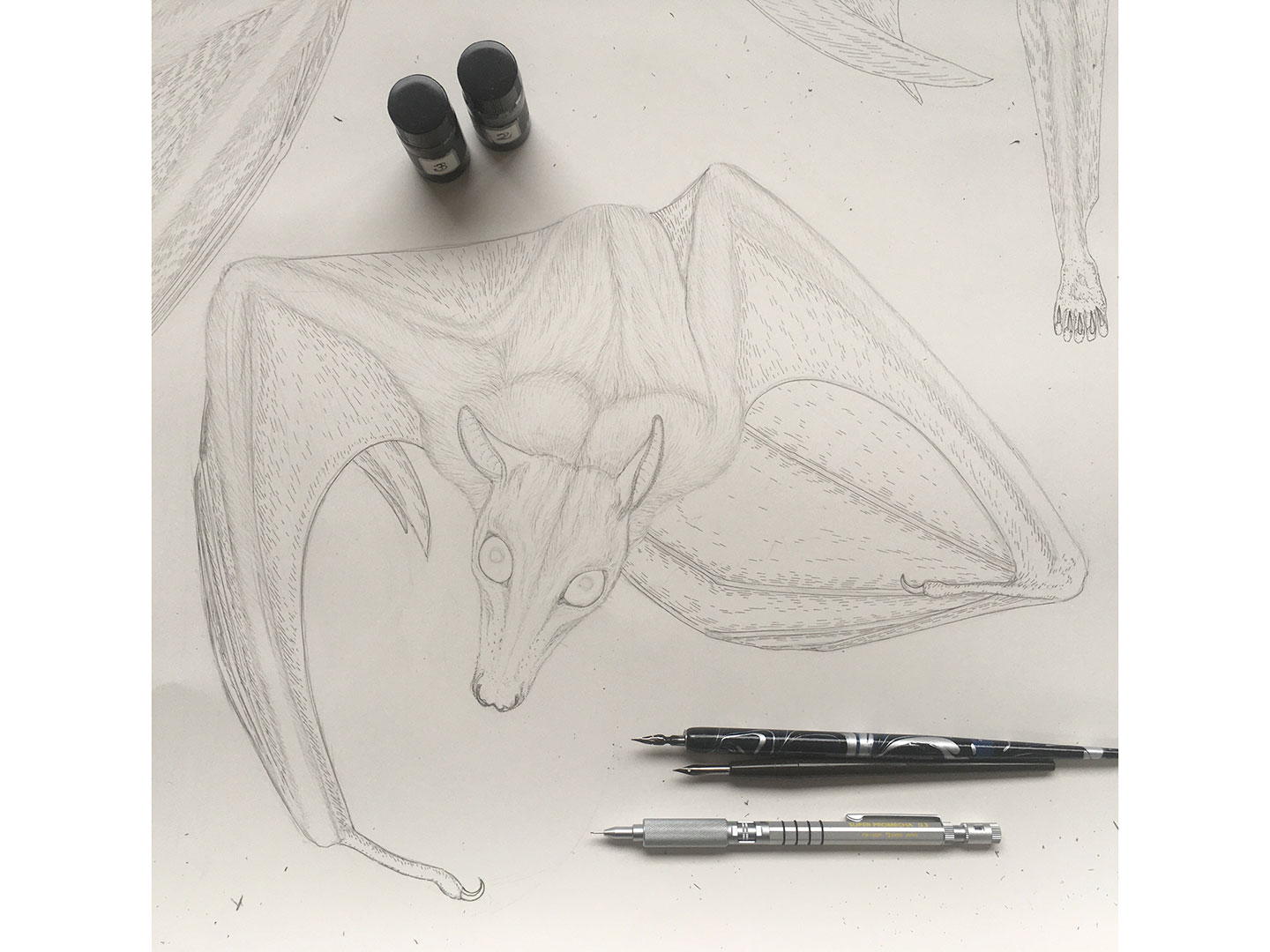
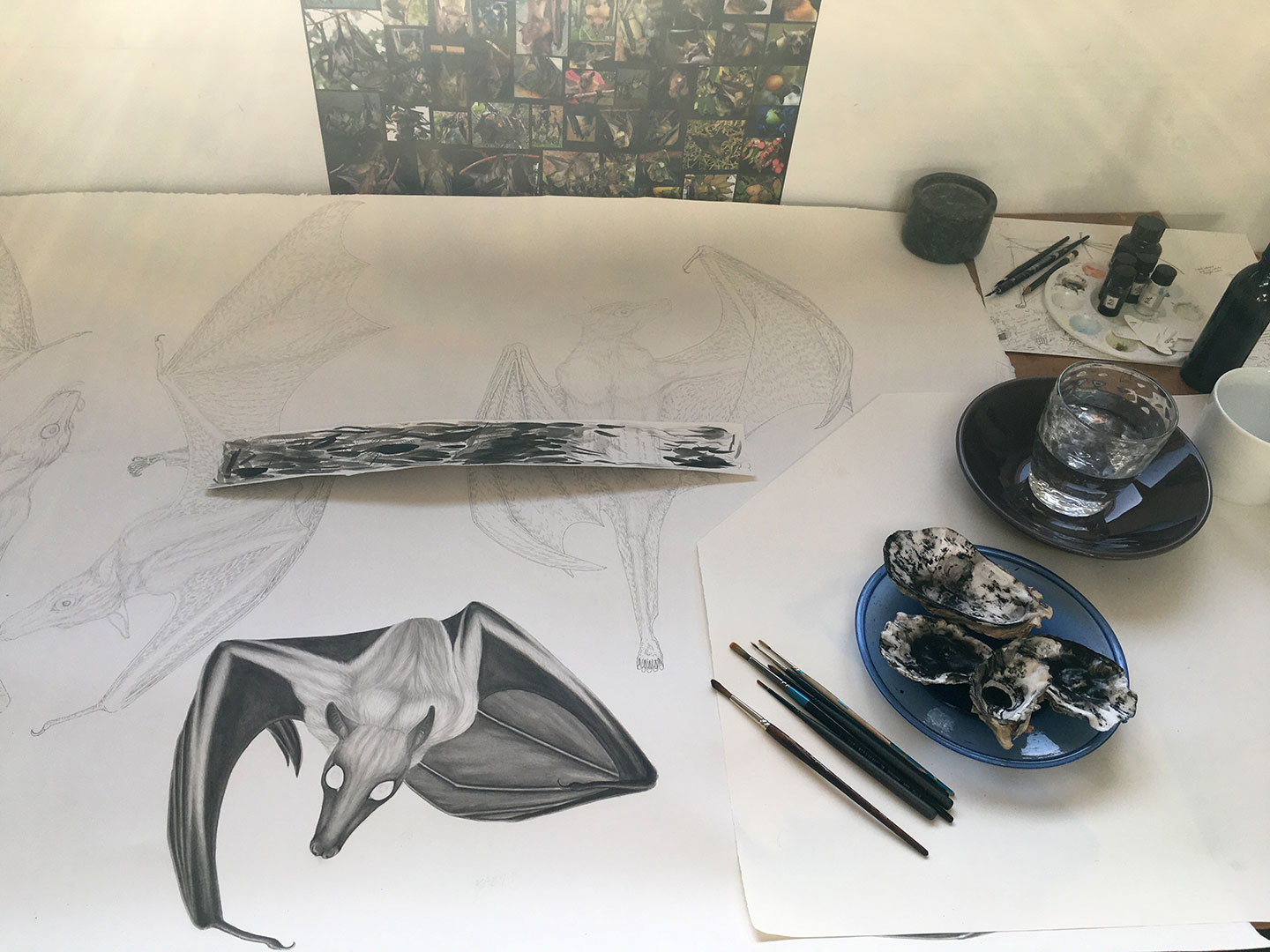
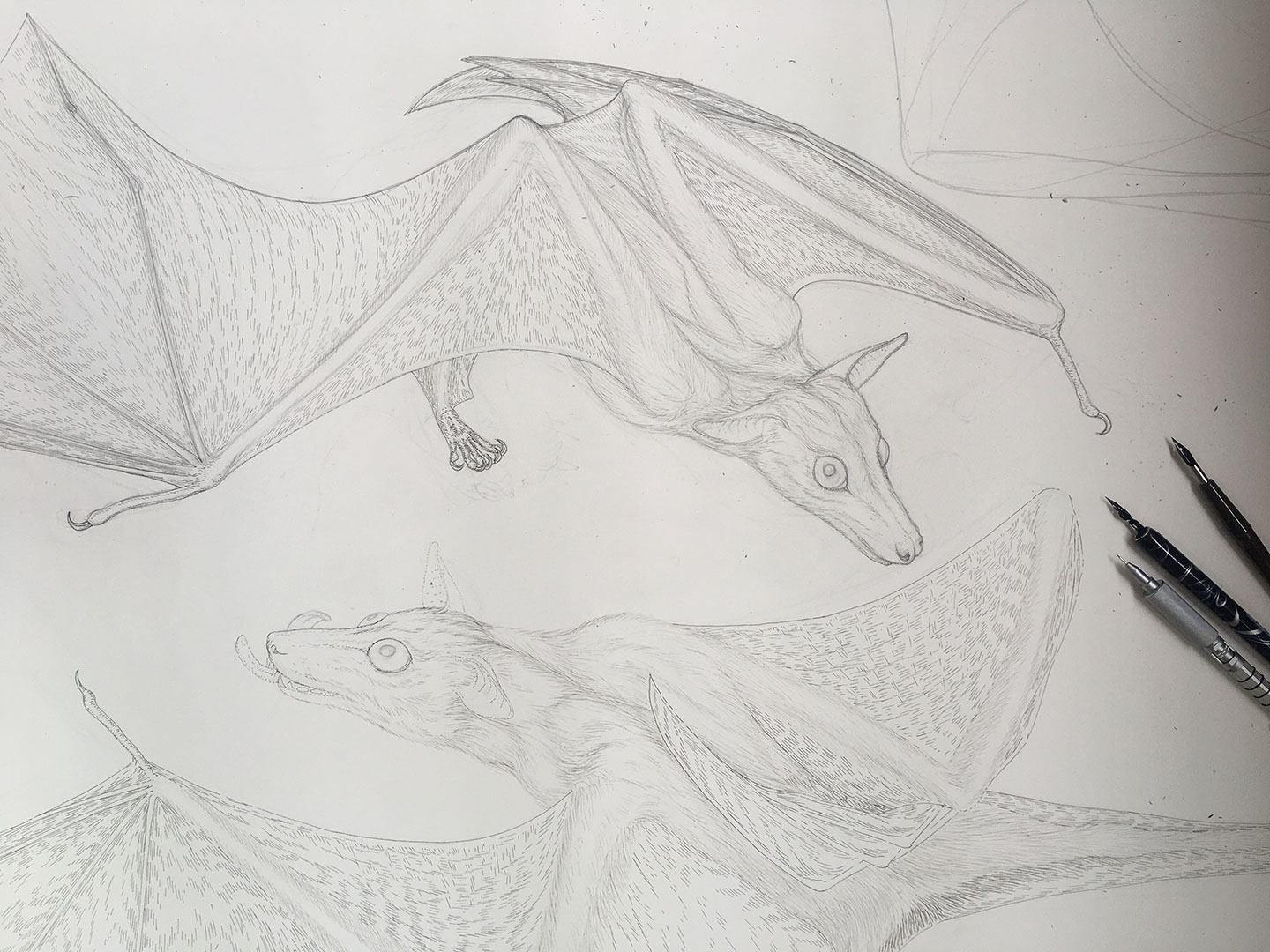
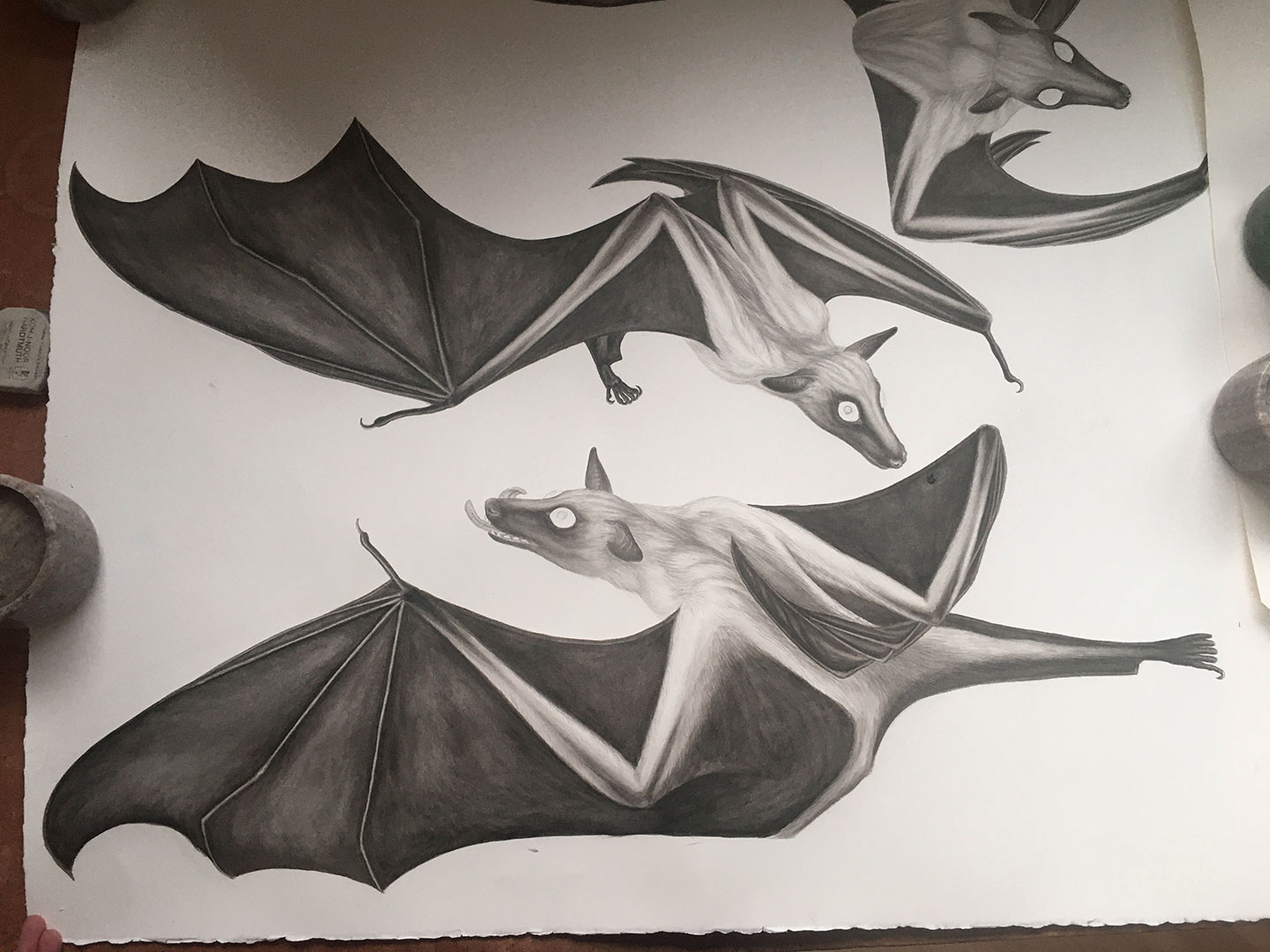
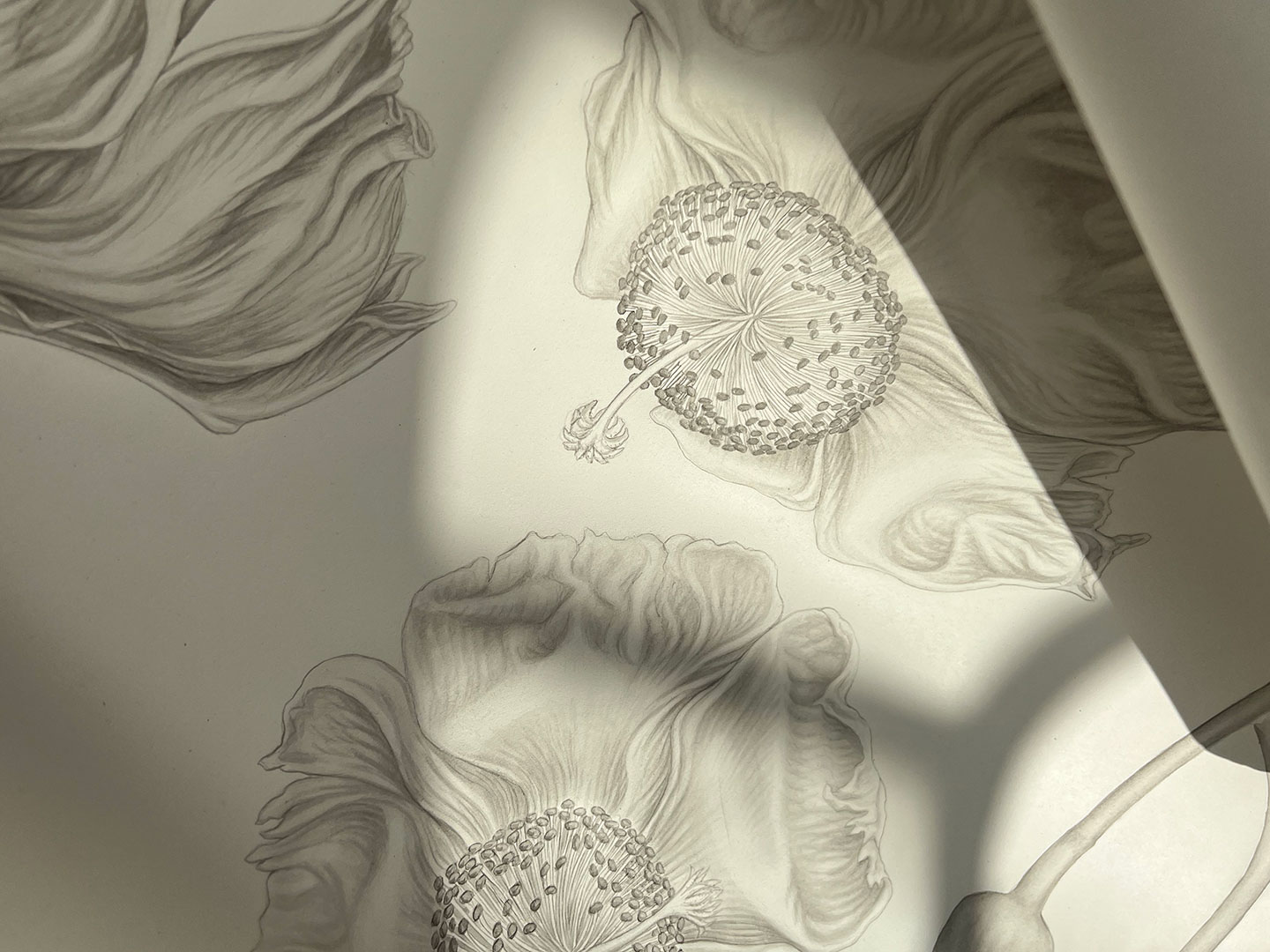
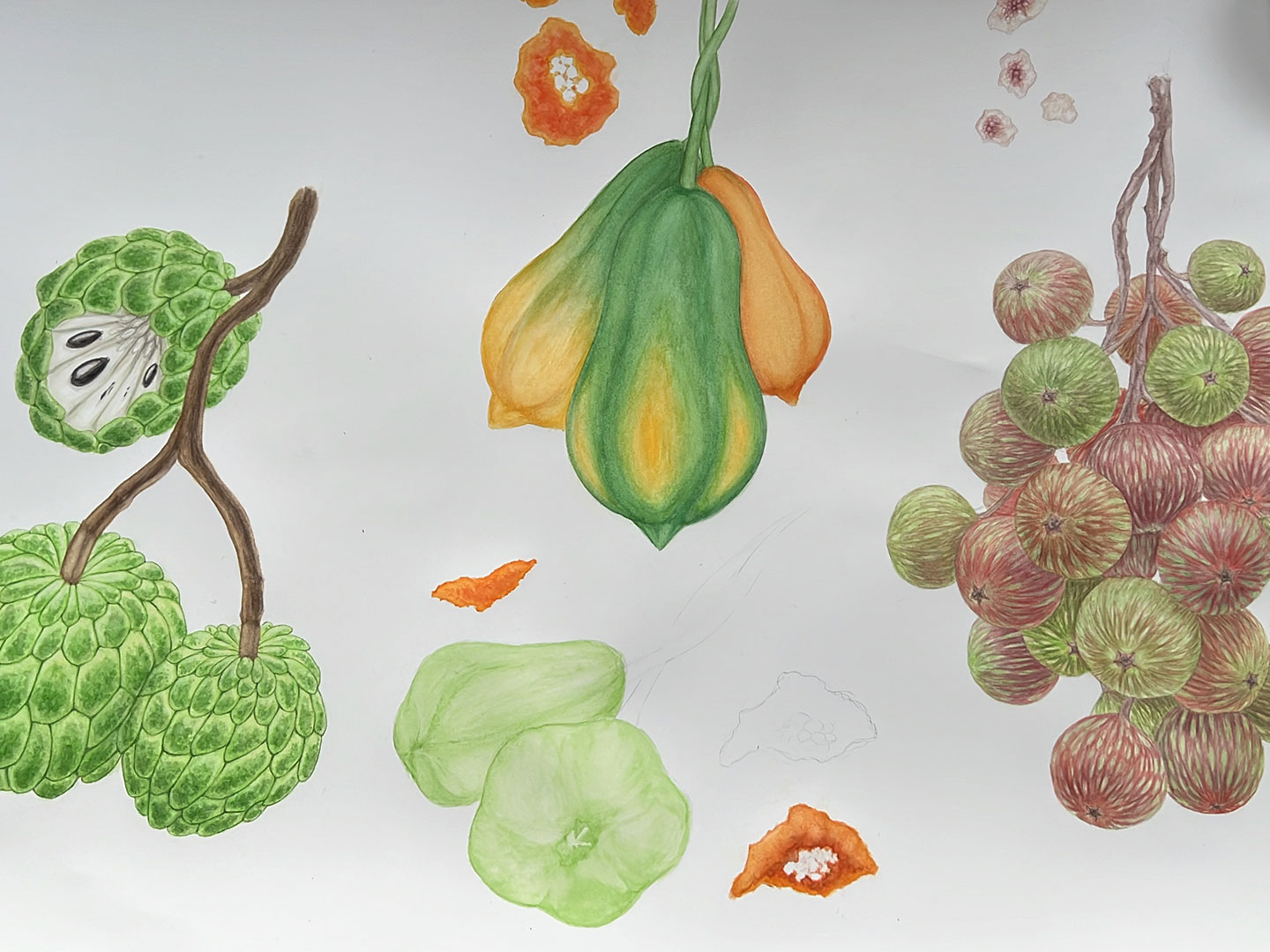


Above: Work in progress images. After initial sketches to understand the bodies and shapes of the bats, I made a bunch of mini bats (and mini fruit) to cut out and play around with. It’s a playful and non-digital way to arrange elements and create a composition. I ended up deciding on 21 bats (including three babies), which I then proceeded to create in approximately life size drawings.
The final bats were first sketched in pencil. Details and textures of the fur and wings were drawn with pen and ink, before using washes of ink to build the shades of the bodies, wings and faces. Indian ink is waterproof, so the fine pen and ink lines were not erased when overpainted. Waterproof also means: better don’t make noticeable mistakes 🙂
For Bats II dusk, the fruit feast in pastel light, I changed the eyes from the nocturnal ‘deer in the headlight’ type to the diurnal eye colours of the bats. I didn’t want to alter the paintings so I just printed all the heads on good paper and painted new eyes to be inserted digitally.
The baobab flowers and buds are also ink paintings, while the fruit are watercolours.

